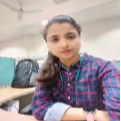
Prem Kumari Verma
Work place: National Institute of Technology Jalandhar, Barnala – Amritsar Bypass Rd, Jalandhar, Punjab
E-mail: premkv.cs.22@nitj.ac.in
Website:
Research Interests: Image Processing, Image and Sound Processing, Computer Vision
Biography
Ms. Prem Kumari Verma is a PhD Research Scholar at National Institute of Technology, Jalandhar, Punjab. She did her M.Tech. from Madan Mohan Malviya University of Technology, Gorakhpur UP, India. Her research interest includes Medical Image Processing, Computer Vision and Information Security. She has published many research articles in reputed national, international journals and conferences.
Author Articles
Non-Invasive Blood Group Prediction Using Optimized EfficientNet Architecture: A Systematic Approach
By Nitin Sakharam Ujgare Nagendra Pratap Singh Prem Kumari Verma Madhusudan Patil Aryan Verma
DOI: https://doi.org/10.5815/ijigsp.2024.01.06, Pub. Date: 8 Feb. 2024
This research work proposed a non-invasive blood group prediction approach using deep learning. The ability to swiftly and accurately determine blood types plays a critical role in medical emergencies prior to administering red blood cell, platelet, and plasma transfusions. Even a minor error during blood transfer can have severe consequences, including fatality. Traditional methods rely on time-consuming automated blood analyzers for pathological assessment. However, these processes involve skin pricking, which can cause bleeding, fainting, and potential skin lacerations. The proposed approach circumvents noninvasive procedures by leveraging rich EfficientNet deep learning architecture to analyze images of superficial blood vessels found on the finger. By illuminating the finger with laser light, the optical image of blood vessels hidden on the finger skin surface area is captured, which incorporates specific antigen shapes such as antigen ‘A’ and antigen ‘B’ present on the surface. Captured shapes of different antigen further used to predict the blood group of humans. The system requires high-definition camera to capture the antigen pattern from the red blood cells surface for classification of blood type without piercing the skin of patient. The proposed solution is not only straightforward and easily implementable but also offers significant advantages in terms of cost-effectiveness and immediate identification of ABO blood groups. This approach holds great promise for medical emergencies, military battleground scenarios, and is particularly valuable when dealing with infants where invasive procedures pose additional risks.
[...] Read more.Other Articles
Subscribe to receive issue release notifications and newsletters from MECS Press journals